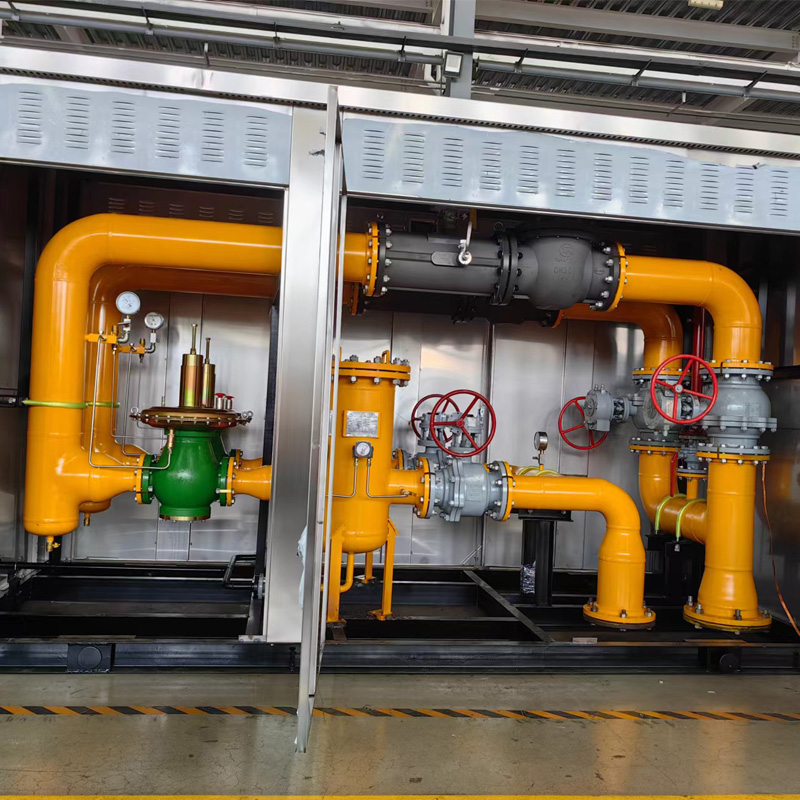
12 月 . 03, 2024 18:51
Back to list
gasification equipment
Gasification Equipment Transforming Waste into Energy
Gasification equipment plays a crucial role in the modern approach to waste management and energy production. As the world seeks sustainable and efficient alternatives to fossil fuels, gasification presents a viable solution by converting organic or carbonaceous materials into syngas, a mixture primarily composed of hydrogen and carbon monoxide. This article explores the significance of gasification equipment, its components, operational principles, and its contributions to energy sustainability.
Understanding Gasification
Gasification is a thermochemical process that transforms carbon-containing materials into syngas through high-temperature reactions with a controlled amount of oxygen and/or steam. This process occurs in a gasifier, a specialized piece of equipment designed to withstand high temperatures and pressures. By breaking down complex organic materials, such as agricultural residues, municipal solid waste, and biomass, gasification helps in reducing the volume of waste while simultaneously generating a cleaner energy source.
Key Components of Gasification Equipment
Gasification systems consist of several essential components that work together to facilitate the conversion of feedstock into syngas. The main components include
1. Gasifier The core of the gasification system, where the actual conversion process takes place. The gasifier type can vary, including fixed bed, fluidized bed, and entrained flow models. Each type offers different advantages depending on the feedstock and desired output.
2. Feedstock Preparation Unit This component involves the preprocessing of materials to ensure they are in the appropriate form for the gasifier. This may include shredding, drying, and sometimes pelletizing biomass to optimize the gasification process.
3. Air and Steam Supply System A critical part of the process, this system controls the introduction of air and/or steam into the gasifier. The ratio of air to steam can significantly impact the composition of the syngas produced.
4. Cooling and Cleaning Equipment After gasification, the produced syngas contains impurities such as tar, particulate matter, and other unwanted components. Cooling and cleaning systems are used to remove these impurities, ensuring that the syngas is suitable for further applications.
gasification equipment

5. Syngas Utilization System Once cleaned, syngas can be utilized in various applications, including combustion in gas turbines for electricity generation, conversion to chemicals, or even upgrading to renewable natural gas through further processing.
Benefits of Gasification Equipment
The implementation of gasification technology offers numerous benefits, particularly in the realm of environmental sustainability and energy production
1. Waste Reduction Gasification significantly reduces the volume of waste that would otherwise end up in landfills. By converting waste into syngas, it minimizes environmental impact and promotes a circular economy.
2. Energy Generation The syngas produced can be used to generate electricity, provide heat, or serve as a feedstock for producing fuels and chemicals. This versatility makes gasification an attractive option for energy recovery from waste.
3. Lower Emissions Compared to traditional incineration, gasification produces fewer pollutants and greenhouse gases. The controlled environment of a gasifier allows for more efficient combustion and reduced emissions of harmful substances.
4. Resource Recovery Gasification facilitates the recovery of valuable materials from waste, including metals and minerals, which can be recycled and reused, thus conserving natural resources.
5. Adaptability Gasification technology can process a wide range of feedstocks, from agricultural waste to industrial byproducts. This adaptability allows for localized solutions to energy generation and waste management challenges.
Conclusion
In conclusion, gasification equipment represents a pivotal technology in the transition toward sustainable energy production and waste management. By converting various feedstocks into syngas, gasification not only mitigates the burden of waste but also offers a cleaner, renewable energy source. As innovation in gasification technology continues to advance, its role in achieving a sustainable and circular economy will become increasingly significant, paving the way for a greener future. Embracing gasification equipment is a step toward harnessing the potential of waste, highlighting the intersection of environmental stewardship and energy efficiency.
Next:
Latest news
-
Unlocking The Quality Gas Pressure ReducersNewsNov.01,2024
-
The Role of Gas Pressure Reducing StationsNewsNov.01,2024
-
The Importance and Functionality of Safety Relief ValvesNewsNov.01,2024
-
The Essential Role of Safety Valves in Natural Gas ApplicationsNewsNov.01,2024
-
The Essential Role of Gas Pressure RegulatorsNewsNov.01,2024
-
Enhance Your Premium Gas FiltersNewsNov.01,2024

